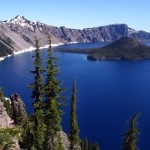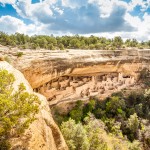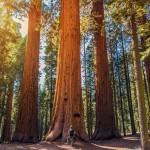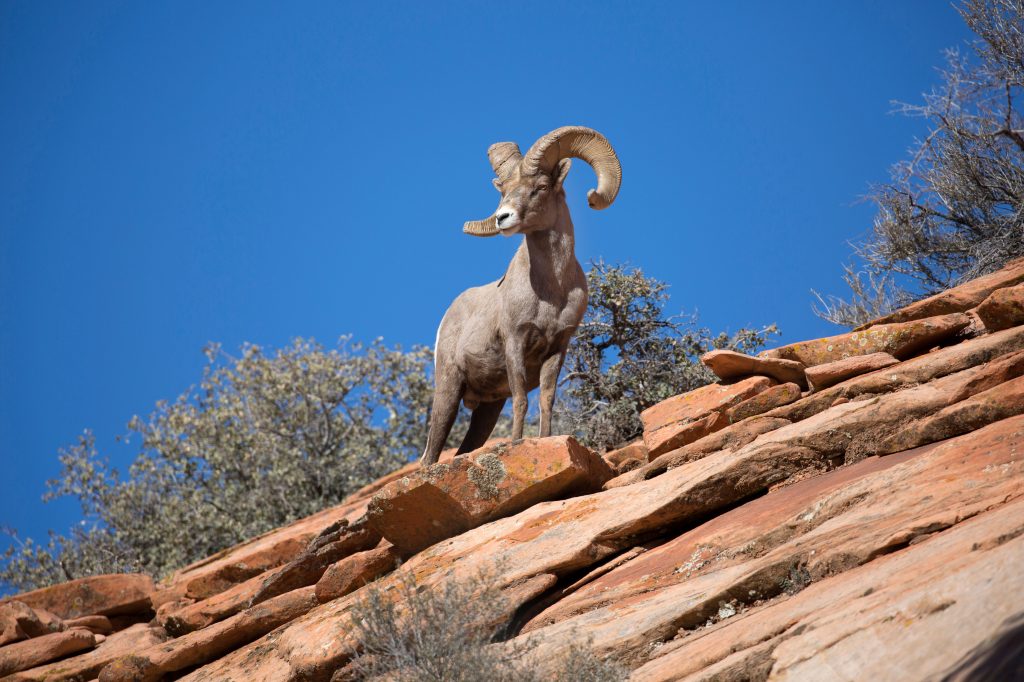Although most game wardens working for state agencies are responsible for covering a pretty big patch of territory within their broader state jurisdiction, there is no other agency that compares with the kind of responsibility that belongs to the U.S. Fish and Wildlife Service.
As part of the Department of the Interior, USFWS manages 150 million acres of wildlife refuge nationwide, spread across 600 different organizational units. It also manages the National Fish Hatchery System, the federal Endangered Species program, and enforces all federal wildlife laws across the country.
Among the service’s 9,000 employees, those filling three different roles handle the bulk of the law enforcement duties typically associated with the role of game warden:
- Federal Wildlife Officers - FWOs are the most conventional type of warden in the FWS system. Trained to perform duties similar to those of state and local wardens, they work at the service’s refuges, monuments, hatcheries, and field stations to manage the hunting, fishing, and recreational use of these properties.
- Special Agents - Special Agents serve a primarily investigative role in the service. They typically work undercover, working on a specific case rather than engaging in general patrol duties. They take on everything from major poaching and resource theft operations to large-scale international wildlife smuggling rings.
- Inspectors - Inspectors work at designated ports of entry, checking both commercial and personal shipments for illegal wildlife or wildlife products. They also ensure that even animals traveling legally are transported humanely.
USFWS Jobs Cover a Broad Range of Locations and Responsibilities
USFWS staff in any of those roles can end up being sent just about anywhere in the country, to both wilderness and urban areas. Eight regions cover the United States and unincorporated territories, comprising:
- 560 National Wildlife Refuges (NWRs)
- 70 National Fish Hatcheries
- 65 Fishery Resource Offices
- 86 Ecological Services Field Stations
- 6 National Monuments
- Various offices, research laboratories, warehouses, and other special management areas
These units cover almost every type of climate and environmental classification found in the United States. They range from the vast Arctic National Wildlife Refuge, the largest in the system at more than 19 million acres … to tiny Mille Lacs in Minnesota, two small islands covering about a half acre, total, that were brought under protection in 1915.
The service also has joint administration of vast and diverse National Monuments, including the Papahānaumokuākea Marine Monument, covering 582,578 square miles of land and ocean around the Hawaiian Islands… the largest single environmentally protected area on the planet.
And inspectors work at 18 different designated ports of entry, primarily in heavily urbanized shipping hubs such as New York and Chicago.
Despite the enormous difference in size and character, the refuges and monuments all represent relatively untrammeled and ecologically important wilderness habitat used by various species for breeding and survival. And smaller stations and ports of entry represent important control points for research or trafficking.
Working With USFWS Guarantees Travel and Opportunity
All game wardens and others working in the area of wildlife and natural resource conservation can expect to spend a lot of time out in the field, away from family….
Federal Wildlife Officers
But federal wildlife officers with the USFWS are in a whole separate class. Because there are so few, they are routinely transferred to parts of the country to serve on details assisting at other refuges that may need extra hands on short notice. Additionally, they may be asked to assist agents or officers from other federal, state, or local agencies in their own areas.
Special Agents
For special agents, this is magnified by the nature of their investigations. International smuggling rings can take years to crack, and even domestic operations can involve a lot of travel and undercover work.
It’s not all fieldwork, either. A 2011 investigation initiated by USFWS into the illegal harvesting of sea turtles took agents first to the USFWS Forensics Laboratory in Ashland, Oregon, where specially trained biologists determined through DNA analysis that confiscated turtle meat belonged to 22 individual protected sea turtles. It was determined that the hawksbill and green sea turtles were taken from Puerto Rican waters, which led agents there to conduct an undercover sting operation in conjunction with territorial and federal officers, netting eight arrests. It took two years of work, from tracing paper trails to making undercover buy/bust stings, to crack the case.
Wildlife Inspectors
For wildlife inspectors, travel is not as much a part of the work, because the world comes to them. Working with U.S. Customs and Border Protection at entry ports, inspectors investigate shipments of wildlife to enforce compliance with the Convention on International Trade in Endangered Species of Wild Fauna and Flora (commonly referred to as CITES) and various federal laws on importation.
They process thousands of incoming shipments, looking for protected animals or restricted animal products. At the Port of Newark alone in 2014, more than 17,000 declared wildlife shipments arrived from overseas.
Confiscated property ends up at the National Eagle and Wildlife Property Repository outside of Denver, a 16,000 square foot warehouse comprised of illegal goods produced through the slaughter of endangered species and the theft of protected natural resources… a warehouse that inspectors also use for training and educational purposes.
Unique Responsibilities Call For The Most Qualified Conservation Professionals
Many USFWS conservation professionals only end up working for the service after putting in years on the job working for state or local agencies. Experience is highly prized at the federal level, particularly for special agents. With the special training that federal conservation professionals receive on top of their years of experience, it’s safe to say that USFWS officers, agents, and inspectors are some of the best in the business.
Still, the USFWS relies on an even wider range of professionals within their ranks who work in specialized roles, and on inter-agency relationships with local, state and other federal law enforcement, public safety and conservation agencies.
Wildlife officers can find themselves patrolling on horses, in light planes, on snowmobiles, or on ships and boats. They are also responsible for underwater areas of refuges that may only be patrolled by SCUBA diving.
Forensic Laboratory
USFWS is also unique in the resources it can bring to bear on the problems of habitat destruction, smuggling, and illegal harvesting. The USFWS Forensics Laboratory located in Ashland Oregon, for instance, is the only one of its kind in the world dedicated to wildlife forensics.
Wildlife officers and special agents work closely with laboratory personnel on crime scene analysis and tracking natural threats to ecological preserves—invasive species, disease, or other biological contaminants can be identified by laboratory scientists and advice provided on managing the threats.
The laboratory also serves as a resource for other federal government agencies that may be involved in prosecuting environmental crimes, such as the National Park Service or NOAA (the National Oceanic and Atmospheric Association).
National Wildfire Coordinating Group
The large amounts of land under management also make the agency responsible for a lot of very flammable territory. USFWS is one of nine agencies that participate in the National Wildfire Coordinating Group (NWCG), the interagency body that determines U.S. wildfire training and management standards. The service hires seasonal engine and hand crews to staff wildfire response in vulnerable refuges, but wildlife officers may be involved in fire management tasks year round, including prescribed burns, thinning, planning, and recovery work.
During fire season, of course, everyone is a potential first responder, and some wildlife officers may hold red cards, the Incident Qualification Card outlined by NWCG to identify the roles that a holder can fill on a wildfire incident. The incident response training that wardens receive as a part of their law enforcement POST (Peace Officer Standards and Training) education dovetails with wildfire incident management.
HAZMAT and Oil Spill Response
Fire, poaching, and illegal fishing aren't the only threats to protected species and habitat in our modern world—industrial accidents can wreak horrific damage on nature reserves, as the 2010 Deepwater Horizon explosion and oil leak demonstrated. FWS sent cleanup response teams to bolster local wildlife officers and staff at Gulf seashore refuges such as Bon Secour, Grand Bay, and 10,000 Islands.
Officers may be responsible for conducting initial responses to HAZMAT incidents and managing clean-up contractors. Working with other service teams, they might help capture and relocate wildlife from affected areas to safer regions, such as moving Louisiana pelicans to Aransas NWR in Texas to get them out of the path of the Deepwater Horizon spill.
Infrastructure Safety and Security
People are often surprised to learn that the FWS manages a number of dams. Wetlands and other waterways under the service's management are often upstream or downstream of dams, as well, making the safety and security of those installations important for not just human inhabitants, but wildlife preservation, also.
USFWS Special Agents and Wildlife Officers work with DHS to ensure security at vulnerable dams and are responsible for initial emergency responses in the unlikely event of a dam breach. They may work to evacuate wildlife or people in the path of potential flooding, or to undertake emergency measures to shore up dams and reduce pressure on the structure.
Even more serious, Wildlife Officers stationed at the Hanford Reach National Monument must be prepared to respond to the joint specters of terrorism and leaking nuclear waste at the adjoining Hanford Site. Fifty-three million gallons of high-level radioactive waste sit along the Monument's border along with the fully operational Columbia Generating Station nuclear reactor.
Shipboard and Aerial Patrols
Once upon a time, almost the only transportation for wildlife officers in remote regions was by water. Today, in areas like Alaska and Hawaii, wildlife officers still patrol in a variety of ships and small boats, working closely with biologists and other wildlife managers to patrol remote regions. Wildlife officers double as mariners aboard vessels like the Research Vessel (R/V) Tiglax in the Alaska Maritime National Wildlife Refuge and on board NOAA vessels in the Papahānaumokuākea Marine Monument.
To check on underwater features of such refuges and parks, certified Wildlife Officers may use SCUBA equipment or ROV (Remotely Operated Vehicles) to patrol.
In many refuges, aerial patrols are an integral part of Wildlife Officer duties. Some may be qualified pilots. In Alaska, particularly, the primary access to more remote regions of refuges may be by air. Planes also represent a valuable tool for spotting and managing wildfires or other threats to the environment.
Co-Managing National Monuments
The service independently manages 4 national monuments out of the 129 that exist today, but it works in partnership with other agencies on 4 other monuments.
For both Special Agents and Wildlife Officers, this means a lot of coordination with officers from the National Park Service, NOAA, and the Department of Energy. In addition to joint patrols, they may also cooperate on investigation and prosecution of criminals violating wildlife laws in the protected areas.
And in the special case of the Hanford Reach National Monument in Washington state, which includes the area that at one time served as the security buffer around the Hanford Nuclear Reservation originally built as the site for nuclear development in WWII, Wildlife Officers have to work closely with DOE security to protect against national security threats.










